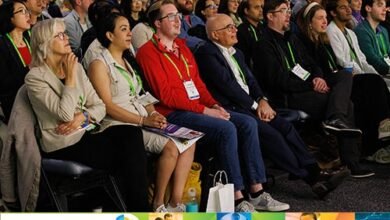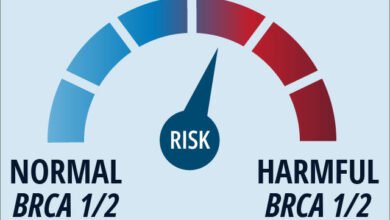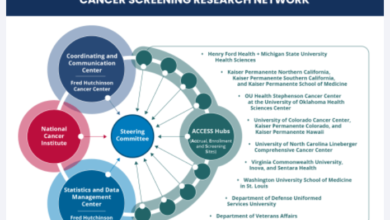Cancer Research UK – Science blog

This April we have come together with partners to celebrate the inaugural Teenage and Young Adult Cancer Awareness month. We caught up with Caroline-May Huxley and Sandra Strauss to explore the importance of shedding a light on cancer in this age group and why, scientifically speaking, this is most certainly not a distinction without a difference
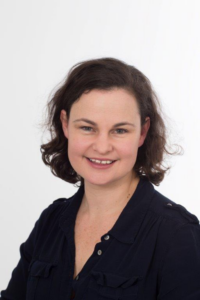
Cancer research in children and young people might be a relatively small field, but it is established… why is it important that cancer in teenagers and young adults (TYA) is considered an area in its own right?
Put simply, this is because of the cancers they face. But it is also to do with factors related to the age of the patients.
These cancers might be rare, but as teenagers and young adults are going through many other changes in their lives, this has a major impact on presentation, diagnosis, treatment and outcome and the longer-term impact on their lives.
For example, it is well established that TYA are more likely to have a delayed diagnosis. This can be due to later presentation, but also a lack of GP awareness of the possibility of cancer in this population. As a result, they are more likely to present as an emergency and at a more advanced stage. Also, they have very low recruitment rates to clinical trials, which has a detrimental impact on progress and outcome.
Can you take us through some of the important scientific distinctions between paediatric and TYA cancer?
It is hard to generalise as the distinctions between paediatric and TYA vary across different cancers. So, it’s more useful to define the cancers that affect TYA and then focus on specific distinctions.
For example, leukaemias are the most common childhood cancers and generally have a very good outcome whilst solid tumours are more common in TYA than paediatric patients.
I specialise in the treatment of sarcomas, which are rare cancers that affect children, TYA and adults. They arise in bones and soft tissues and at any site in the body. There are many different types, which have different, often, complex and intense multi-modality treatment and there are distinctions in these cancers across paediatric and TYA populations. For example, rhabdomyosarcoma (RMS) – a type of soft tissue sarcoma – has two subtypes, and it’s the fusion-positive RMS form, characterised by the FOXO1 fusion, which mostly affects TYA. These tumours are very aggressive, and much more commonly metastatic at diagnosis. Sadly, this means they have dismal survival rates of around 20-30% at 5 years. Conversely, fusion negative RMS mainly affects young children is very treatable and has excellent outcomes.
Another ultra-rare sarcoma – desmoplastic round cell sarcoma, which has an incidence of less than 1 per million – most commonly affects young adults and almost always presents as widely metastatic disease, again with very poor prognosis.
Two primary bone sarcomas also have a peak incidence in adolescents – osteosarcoma and Ewing sarcoma. These require treatment in specialist centres with intensive multiagent chemotherapy. In the past, paediatric and adult patients generally received different treatment protocols as it was thought children tolerate more intense cytotoxic therapy than TYA and adults. However, this has now been refuted – certainly in bone sarcomas – and TYA (and older adults) will now receive the same treatment as children. Despite this, there is still a disparity in outcome. Recent clinical trials demonstrated a better outcome for patients under the age of 14 with Ewing sarcoma, compared to those of 15-24, and poorer outcomes still for older adults. In osteosarcoma, similar patterns are seen.
The cause of this is not completely understood – and is not linked to stage of disease or primary site. There are many debates about whether the diseases are biologically the same or whether factors such as patient metabolism or pharmacogenomics change through puberty.
The specific complex psycho-social needs of this population almost certainly also contribute. We are fortunate in the UK to have dedicated TYA units that provide age-appropriate holistic care with a dedicated TYA Multi-disciplinary team to help meet their needs, improve patient experience, compliance and reduce the longer-term impact on these young people.
Research into children and young people’s cancer has allowed real advances in patient outcomes – but progress has slowed somewhat. Why do you think this is?
Again, this is different for different cancers. In bone sarcomas, improvements have mostly been made by giving more intense multi-modality treatments (that include surgery and radiotherapy) with more intense chemotherapy, made possible with better supportive care and specialist provision.
Beyond that, for sarcomas, progress has been hampered by their rarity, so conducting clinical trials is difficult. But it’s true there is also a lack of biological understanding. For example, in osteosarcoma –which is biologically very heterogenous – very few new targets have been identified. In Ewing sarcoma and RMS, the oncogenic fusions that drive the cancers aren’t currently druggable, which of course hampers development of new treatments.
Another important factor is that access for TYA patients to clinical trials is poor. There are very few trials open and, for those that are, age cut-offs often preclude entry.
What would you say are the unique challenges faced by discovery and clinical researchers looking to study teenage and young adult cancers.
The rarity, the heterogeneity of the cancers and of the patients! Lack of access and recruitment to clinical trials is a major factor as mentioned. A joined-up approach is also key here as there is a real need for researchers to work with specialists who manage the patients, ideally across all ages. Collaboration is the only way to make progress, and this needs to be across adult and paediatric oncology and, ideally, international.
As a clinician scientist in this space, what would you like to see change?
Much more specific funding and focus on TYA cancers, to facilitate better collaboration between basic science-translational researchers and clinicians across adult and paediatric oncology.
I’d also like to see funding to recruit to clinical trials – potentially basket-type trials – and to maximise the amount we learn from the patients we treat.
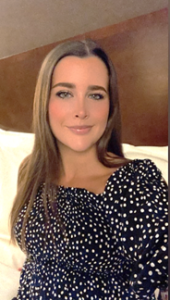
Congratulations on the inaugural TYA cancer awareness month! The study of cancer in children and young people is well established as a research field – why is it important to define teenagers and young adults as an area of interest in its own right?
The types of cancer that TYA patients get are different from children and older adults, and TYA patients can respond very differently to treatments. So, a tailored, age-appropriate approach to research and treatment for these distinct cancers is necessary, to increase our understanding of these cancers and to improve outcomes for this age group.
In the UK, specialist, age-appropriate care is offered to people aged 16-24 who have been diagnosed with cancer. There are also healthcare professionals who have specific expertise in treating and supporting TYA patients. Having the right people and the right environment is so critical. This is because the impact on a young person being diagnosed with cancer is unique. Every single aspect of life is affected and disrupted: physical health, social life, education and employment goals and psychosocial wellbeing.
It’s really important that we now have a dedicated month to raise awareness of the unique challenges teenagers and young adults with cancer experience. It’s a huge collective effort of all the cancer charities working in this space.
The researchers that work on CYP are dedicated and talented, and incredible progress has been made for patients, but there has been a slowing of progress in the last 20 years. Why do you think this is?
I completely agree, we have seen progress with more than 8 in 10 young people now surviving their cancers for 5 years or more. But we’re clearly not where we need to be. Cancer remains the leading cause of death by disease in this age group. 15–24-year-olds have seen the largest increase in incidence rates since the early 1990s, increasing by almost a quarter (24%).
TYAs often experience lower survival rates than other age groups for certain cancer types.
For some cancer types we’ve hardly seen any improvement at all over the last few decades. This has been attributed to several factors: the cancer subtypes, TYA biology and sensitivity to therapies, low participation in clinical trials and complex psychosocial needs. Also, their position between healthcare services for children and adults leads to issues in conducting research for this age group. Many cancers that arise in TYA patients are defined as “rare” because they are relatively uncommon during early childhood and older adulthood. Therefore, the clinical care, clinical trials and biological study of these cancers have not progressed at the same rate as common childhood or adult cancers.
Clinical trials, of course, find better ways to treat cancer; however there is a low participation in clinical trials in the TYA age group. This is holding back progress but there is a lot of momentum to change that. In the NHS Long Term Plan it states: “We will actively support children and young people to take part in clinical trials, so that participation among children remains high, and among teenagers and young adults rises to 50% by 2025”.
How do you see the role of an organisation like CRUK in forwarding TYA research?
In 2021/22, Cancer Research UK spent £13.4 million on research specific to cancers that affect 0-24-year-olds, making CRUK the biggest charitable funder of research into children’s and young people’s cancer in the UK. So, we definitely have our part to play in forwarding TYA research, but we can’t do it alone. We understand the unique issues facing teenagers and young adults with cancer and are determined to do everything we can, working together with researchers, other charities and funders and most importantly people affected by these cancers, to tackle these challenges and accelerate progress for this age group.
Cancer Research UK is active in TYA research. Here are some examples of what we’re currently doing:
• We fund the Birmingham Clinical Trials Unit which is an internationally leading centre for design and delivery of high-quality, practice-changing trials for children, young people and adults with cancer, with trial age-inclusivity being a key priority.
• We co-fund 17 adult and 12 paediatric Experimental Cancer Medicine Centres (ECMCs) across the UK. This is a partnership between CRUK, The Little Princess Trust and the four UK Health Departments. We have developed a roadmap to improve access to early phase trials for TYA patients and made changes to our trial finding tool to make it easier for clinicians to find suitable trials for their TYA patients
• We’re supporting age-inclusive trials such as DETERMINE, the first UK national precision medicine trial in rare cancers in children, teenagers and adults.
• We ask applicants to justify upper and lower age limits of clinical trials, deeming it essential that the lower age limit for studies involving adults to be set normally at 16 rather than 18 years.
• We’re hosting 3 webinars and an in-person conference to bring the CYP research community together to spark new ideas and collaborations to tackle the challenges within CYP cancer research
• Our dedicated Children and Young People Cancer Insights Panel highlighted TYA as an unmet need, and we will continue to work together on our TYA initiatives
• Together with Blood Cancer UK, we co-fund VIVO Biobank, the UK’s leading research resource dedicated to storing samples and data of cancers affecting children and young people. Our aim is to increase the banking of teenage and young adult cancer samples.
We have a CYP strategy, what would you really like to see change in the field in the coming years?
Whilst we talk about improvements in survival as a way of demonstrating progress, we also need to talk about quality of life.
A cancer diagnosis and treatment will have a huge impact on these young people and for TYA patients who survive, the long-term physical and mental side effects are something they must manage for the rest of their life. Surviving cancer doesn’t just end after treatment, it’s the first step.
We need to ensure every young person survives cancer and with a good quality of life. To do this we need to see more research and clinical trials that consider the unique challenges for TYAs, improving availability, accessibility, and relevance. Alongside increased sample and data collection, this will lead to a better understanding of these cancers and how treatment works for this age group.
We want to see more effective treatments that target the cancer but minimise side effects. We need to be engaging and working together with TYA patient advocates to design and deliver research to be more age-appropriate and inclusive: removing unnecessary obstacles and barriers.
In the coming years, I want it to be easier for TYA patients to participate in research so that more TYAs can benefit from research. I want to see a future where all young people can lead longer, better lives, free from the fear of cancer.
Source link
#Cancer #Research #Science #blog
